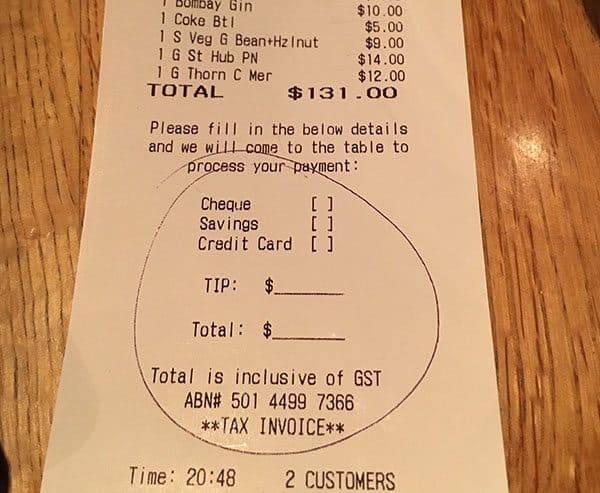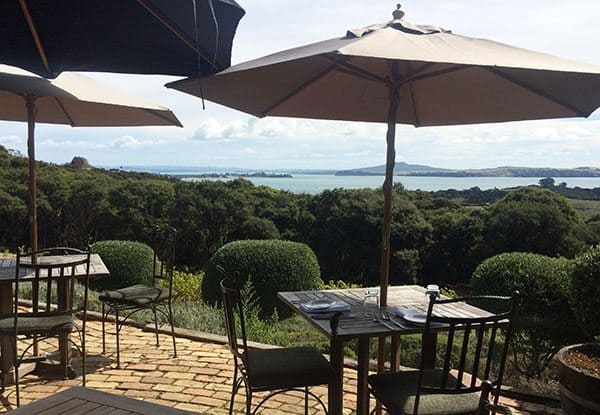Here’s your answer to the tricky question of whether to tip and how much!
So you’ve just had a delicious meal in Dubai and the bill (check if you’re American!) arrives. There is a space for a tip… What do you do?
This post covers tipping etiquette in 24 countries to help you work out what to add – or not.
In New Zealand we are not known for being great tippers. That’s because restaurant staff are paid an average wage and don’t rely on tips to make a living like they do in America where wait staff in many states are only required to be paid the minimum wage of $2.13 per hour. YES! The only slightly redeeming factor is they also require those staff make at least $20 in tips per month. (I’m actually really shocked researching this for this post. Here is the link to the US Department of Labor site if you want to check it out.) Of course the reason they work in this industry is because they invariably make a lot more than that.
Here’s a quick run down on what is expected around the world when it comes to tipping in restaurants:
Tipping in Argentina – adding 10% to your bill is normal, 15% in Buenos Aires
Tipping in Australia – tipping is not the norm here, except in the touristy areas where Americans and their generosity have ruined it for everyone! Leaving a few bob will go over very well if you decide to throw your money away. But do be aware that you’ll face a “Sunday surcharge” and this little hint was left for me in a restaurant in Sydney’s Darling Harbour

Tipping in Cambodia – add about $1 per diner
Tipping in Canada – the minimum wage is $11.25 per hour so leaving a tip should really be at your discretion, however since they are only a coin’s throw from America, tipping is the norm. Anywhere from 10%-20% is usual.
Tipping in China – tipping is not expected in China, but you know they won’t be paid much. Some restaurants have signs saying not to tip as they feel is undervalues their staff. You can leave a little cash if the service was great. They won’t be offended (like in Japan!) Posher restaurants are the exception and usually add a service charge. However you do tip your guides and if you have a driver. This makes up the main part of their salary so if you’re in a group with a guide/translator you should tip about 50RMB (about NZ$12) per person per day to be split between your driver and guide.
Tipping in Dubai – many places add 10% to your bill but that doesn’t go to your waiter. If you want to make a fuss and refuse to pay it, it’s not compulsory. Locals often refuse to pay it and prefer to tip their waiter directly.
Tipping in France – a service charge of 15% is added to your bill by law, but generally goes to the owner as staff are on salaries. You could be kind and leave a few euros on the table if the service has been awesome, but you have already tipped.
Tipping in Germany – tipping is expected and a service charge is usually included on the check. It’s not uncommon to leave a few extra euros if the service was amazeballs.

Tipping in Hong Kong – it might be part of China but it used to be run by Britain. 10% is the standard gratuity added to your bill. If it isn’t you might like to round it up to the nearest 0.
Tipping in India – anything from a few rupees to 10% is about right, depending on the level of the restaurant.
Tipping in Indonesia – a 10% service charge is usually included, but it’s typical to add a little more cash and round it up to about 15%.
Tipping in Italy – tips are not expected, but if you do want to leave a little something, do it in cash rather than add it to your credit card bill so it goes to the staff. A few euros is about right up to 10% if it was wow.
Tipping in Japan – tips can be considered offensive, so if you really really want to shove some cash at your server, be discrete. Maybe even pop it in an envelope.
Tipping in Mexico – staff aren’t paid well but tips are not usually added. 15% is about right and leave it in cash on the table if you can.
Tipping in New Zealand – like Australia tips aren’t expected but in the main cities it’s a custom that is catching on. Leave 10% if the service was great and your waiter will go home with a huge grin.
Tipping in Pacific Islands – tipping is not expected in the Pacific Islands, but if your meal was amazing or your server charmed you, leaving up to 10% is generous.
Tipping in Singapore – 10% is added to your bill. Feel free to tip more if the service was fab.
Tipping in South Africa – adding 10% to 15% is traditional. Sometimes it’s included on your check, so check!
Tipping in Spain – tips are not usually included on the bill and it isn’t expected in cheaper restaurants. Up to 5% is about right for posher places.
Tipping in Tahiti – tipping isn’t expected, but not uncommon for great service.
Tipping in Thailand – tipping is not included nor expected, but leaving a few baht (5% to 10% or about $1 per diner) for your server in a posh restaurant will be gratefully received as incomes aren’t high.
Tipping in UK – sometimes the tip is already added so check that on your bill. If it isn’t there is no obligation to leave anything, but if you do decide to err on the side of generosity, 10% is good.
Tipping in USA – probably the most expensive tips in the world. Up to 20% is the norm to add to your check and many restaurants print a handy little percentage to cash calculation on your check. Some diners prefer to double the tax component and that comes out at around 18%.
Tipping in Vietnam – if no service charge is added to your check, leaving about 10% in cash on the table is usual.
______________________________
BEWARE! Before you throw extra cash at your waiter, check that a service charge hasn’t already been included (of course!) Look out for “gratuity”, “service charge”, “cover charge” on your bill first. Or “propina” in Spanish, “gorjeta” in Portuguese, “coperto” in Italian.
______________________________
If you found this post helpful, share it with your travelling mates! You might also like this one on how long your passport needs to be valid to travel to this list of 30+ countries >>

